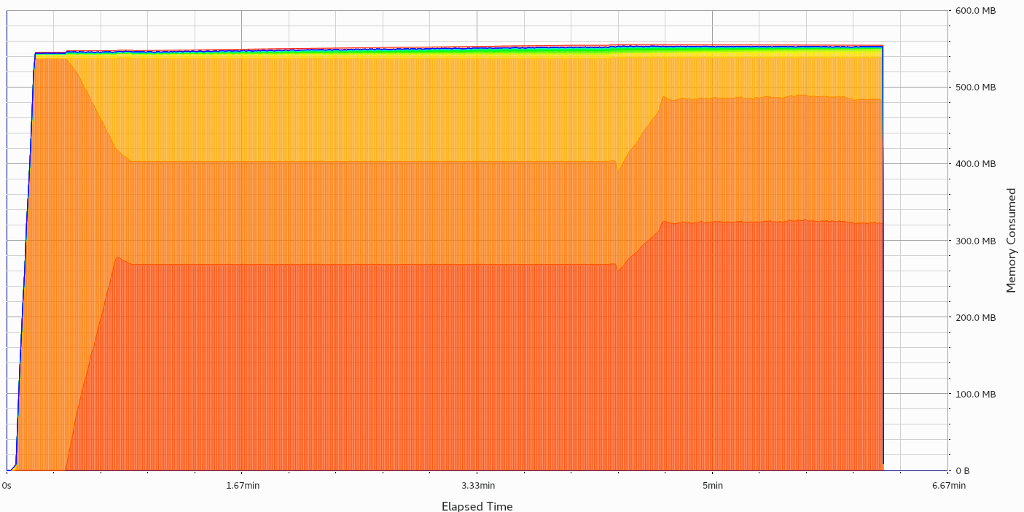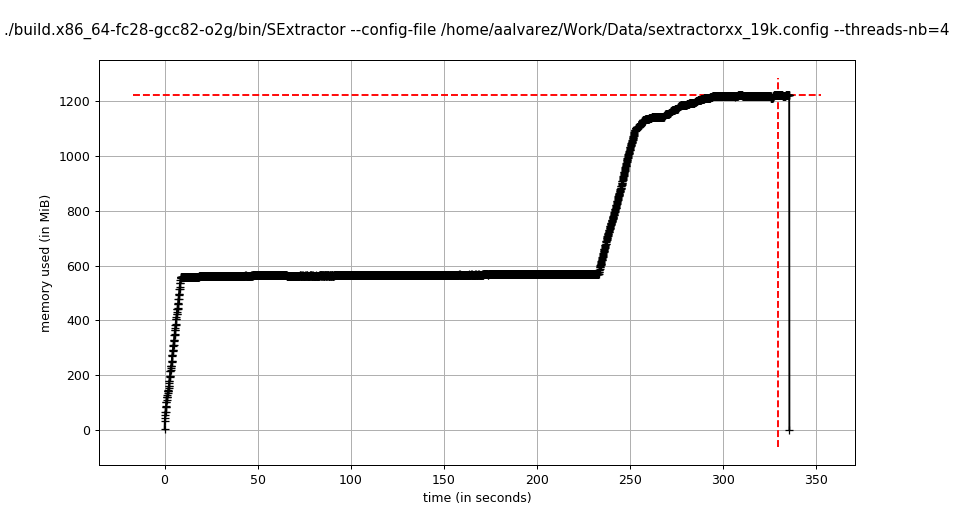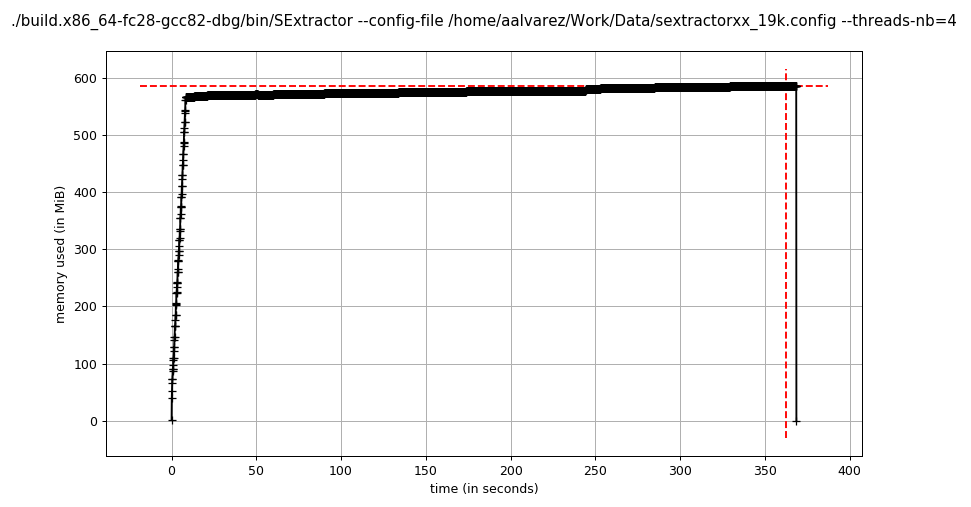Where is my memory II
Short story
SExtractor is doing just fine! This behavior is caused by glibc malloc.
Long story
When running with the same number of threads, and the same configuration, but switching the malloc implementation, we get different behavior.

Please, note that, by no means, am I an expert on malloc implementations, so here I am mostly guessing.

As far as I can tell, SExtractor can be quite allocation-heavy.
Probably when multi-threading kicks-in, the detection stage is still working on the detection image looking for sources, so it is allocating stuff.
The measurement threads start trying to allocate as well (i.e. image stamps to take measures). To avoid contention, glibc will spawn a new allocation arena, and get the memory chunks from there.
Since the threads are using different heaps, even though the tile manager is keeping the used memory (as far as it can tell) below the limit, the resident memory peaks at twice the configured limit, since glibc is allocating on multiple heaps, and not returning unused memory to the system,

TCMalloc does not return memory to the system either (see Caveats), but large allocations are done on the central heap. For SExtractor, this is probably the case. Tiles are configured to be, in this case, 256x256 pixels, 4 bytes each = 256 KiB, which is what TCMalloc considers “large”.
As all these large allocations are done on the same heap, the resident memory is kept under the expected value.

Jemalloc also uses arenas, and that is probably why there is a very similar
memory increase when multi-threading kicks-in. However, jemalloc
does return unused memory to the system via madvise.
That is obviously visible on the graph.
As far as I can tell, there are multiple configuration parameters for telling jemalloc when to return memory to the system (returning straight away can be wasteful if more allocations are coming later). The defaults seem to be 10 seconds.
Summary
As the heaptrack graph showed, SExtractor tile manager is behaving properly, and there are no leaks. The amount of allocated memory - from the point of view of the tile manager - is what is expected, but the amount of resident memory depends on how the underlying malloc/free are dealing with the allocations when running with multiple threads.